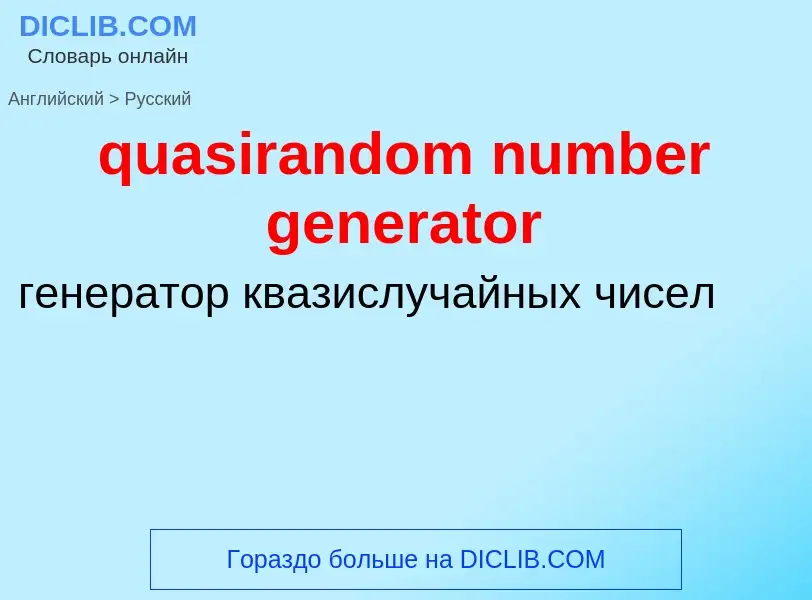Tradução e análise de palavras por inteligência artificial ChatGPT
Nesta página você pode obter uma análise detalhada de uma palavra ou frase, produzida usando a melhor tecnologia de inteligência artificial até o momento:
- como a palavra é usada
- frequência de uso
- é usado com mais frequência na fala oral ou escrita
- opções de tradução de palavras
- exemplos de uso (várias frases com tradução)
- etimologia
quasirandom number generator - tradução para russo
математика
псевдослучайная последовательность
Wikipédia
Random number generation is a process by which, often by means of a random number generator (RNG), a sequence of numbers or symbols that cannot be reasonably predicted better than by random chance is generated. This means that the particular outcome sequence will contain some patterns detectable in hindsight but unpredictable to foresight. True random number generators can be hardware random-number generators (HRNGs), wherein each generation is a function of the current value of a physical environment's attribute that is constantly changing in a manner that is practically impossible to model. This would be in contrast to so-called "random number generations" done by pseudorandom number generators (PRNGs), which generate numbers that only look random but are in fact pre-determined—these generations can be reproduced simply by knowing the state of the PRNG.
Various applications of randomness have led to the development of different methods for generating random data. Some of these have existed since ancient times, including well-known examples like the rolling of dice, coin flipping, the shuffling of playing cards, the use of yarrow stalks (for divination) in the I Ching, as well as countless other techniques. Because of the mechanical nature of these techniques, generating large quantities of sufficiently random numbers (important in statistics) required much work and time. Thus, results would sometimes be collected and distributed as random number tables.
Several computational methods for pseudorandom number generation exist. All fall short of the goal of true randomness, although they may meet, with varying success, some of the statistical tests for randomness intended to measure how unpredictable their results are (that is, to what degree their patterns are discernible). This generally makes them unusable for applications such as cryptography. However, carefully designed cryptographically secure pseudorandom number generators (CSPRNGS) also exist, with special features specifically designed for use in cryptography.

